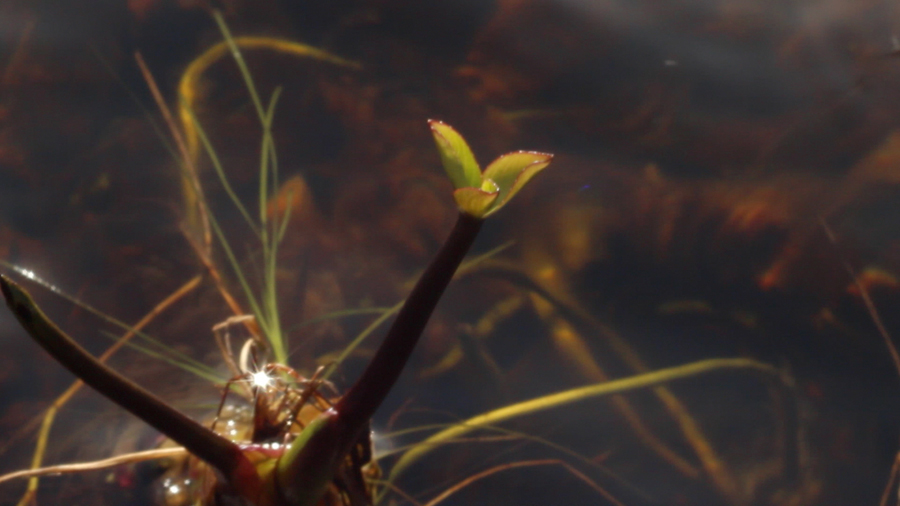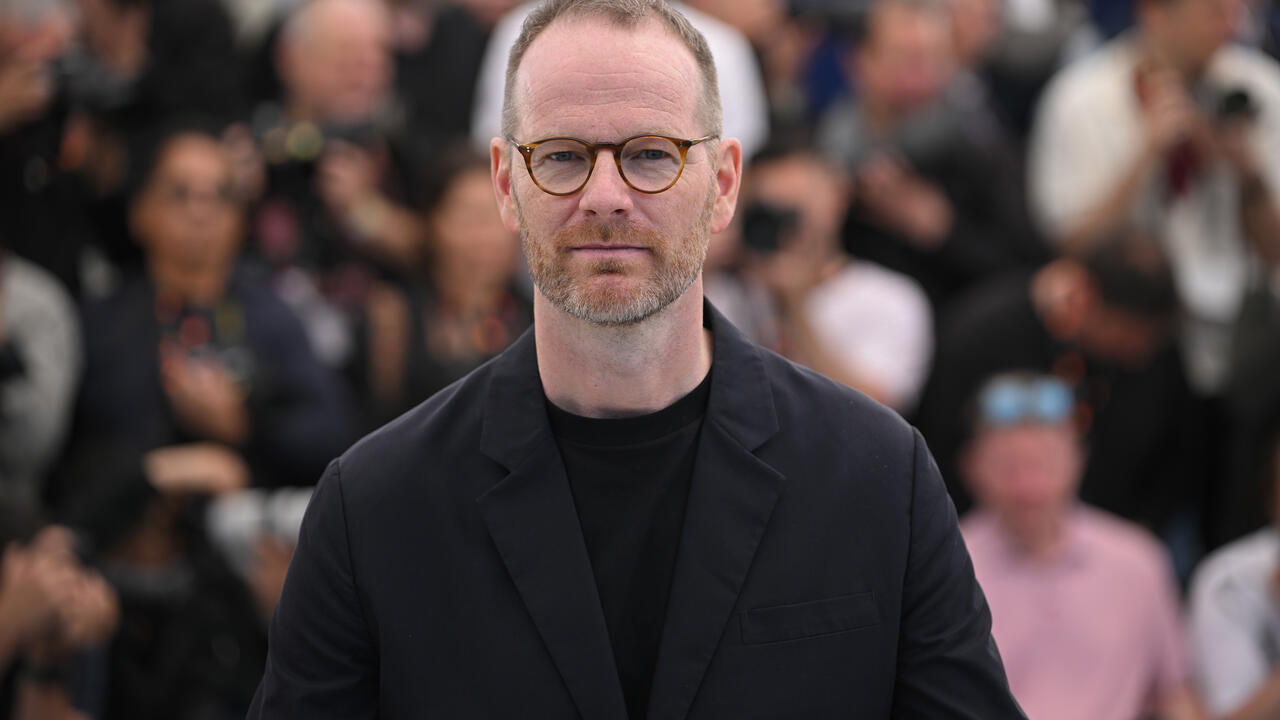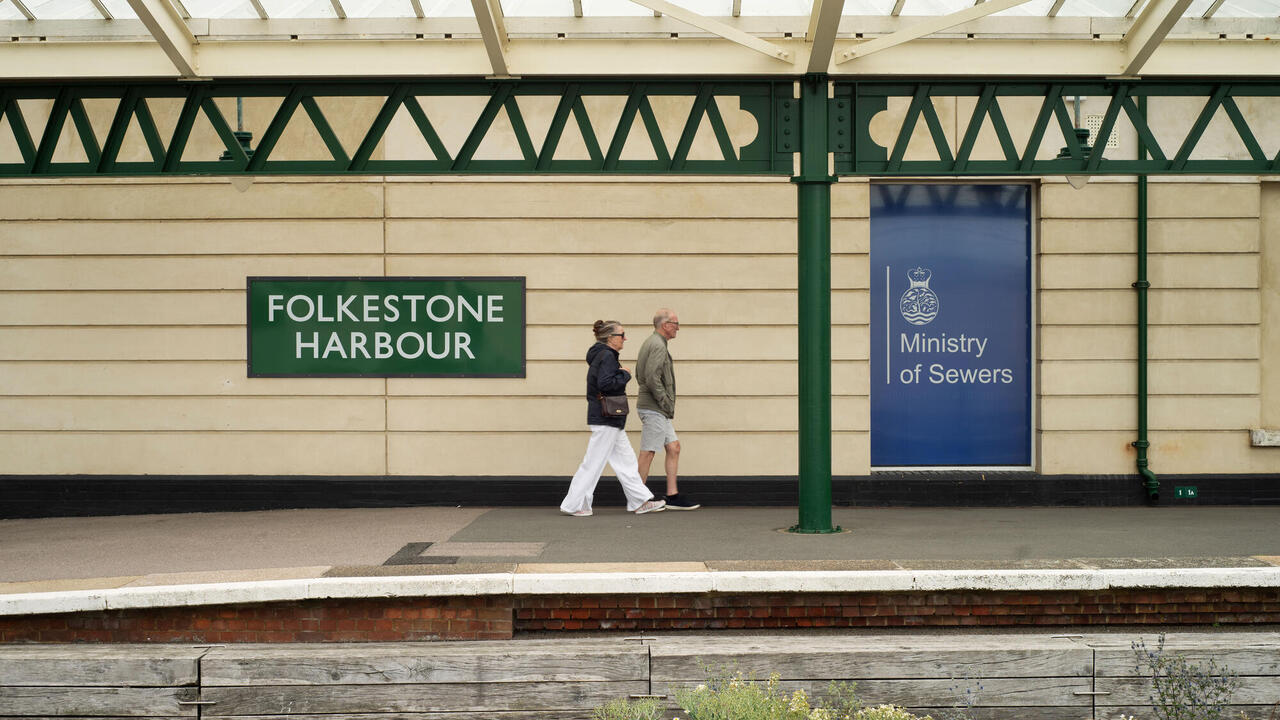Highlights From The Glasgow Film Festival 2018
In the artists’ film strand, Margaret Salmon, Basma Alsharif and Martine Syms showed a strong emphasis on people, place and storytelling
In the artists’ film strand, Margaret Salmon, Basma Alsharif and Martine Syms showed a strong emphasis on people, place and storytelling

In Mm (2017), a 30-minute film by the New York-born, Glasgow-based artist Margaret Salmon, the race-day world of the all-male Berwick Bandits speedway team emerges as a kind of faded emblem of benign masculinity. Using her camera to gently probe and observe, Salmon’s 35mm colour film displays the kind of dogged interest in humanity that has come to typify her 20-year career. It is one of 18 films, ranging in length from four to 70 minutes, that are featured in ‘Circle’, a survey show presented at Tramway as part of Glasgow Film Festival’s ‘Crossing the Line’ programme of ‘art on the cinema screen’. With music by the Glasgow/London post-punk band Sacred Paws – who provided live accompaniment for a special screening during the festival – Mm was commissioned for last year’s Berwick Film and Media Arts Festival. It is a thrilling example of Salmon’s use of sound and image to create intimate, observational portraits of everyday lives.

Curated by Lux Scotland director Nicole Yip and presented in near-darkness, ‘Circle’ makes a virtue of Tramway’s vast, echoey main gallery space, in part through its clever use of sound. Part-time (2018), a six channel audio piece, features film outtakes, research recordings and sound tests, with speakers dotted around the space. Conversations drift through the gallery as interviewees share stories with Salmon that offer a glimpse into her people-oriented process, their voices bleeding across the space. Company (2018) is another compilation, a block of nine monitors stacked in rows of three and intermittently showing a selection of four films. The main focus, though, is a curtained-off cinema area screening a different programme of Salmon’s films for each of the exhibition’s four-week run. Arranged thematically to reflect her developing relationship to people and place, each programme’s title provides an echo to the roving, curious and subtly investigative nature of Salmon’s work: ‘Here’; ‘There’; ‘Everywhere’; ‘Outside Over There’.

Salmon's films, with their unflinching yet humanistic approach, at times recall the films of another Margaret – Margaret Tait (1918–99), the Orcadian filmmaker whose legacy is celebrated in an annual film award instigated by the festival. Last year's recipient was Sarah Forrest, and her Margaret Tait Award commission, April, received its premiere at Glasgow Film Theatre. (Read our profile of this year’s winner, Alberta Whittle, here.) Forrest’s films to date have been short, tightly-focused and domestic in scale, using text, music and image to reveal everyday quirks and anomalies. With the award’s GBP£10,000 budget, Forrest went to the Isle of Lewis to research stories around the idea of ‘second sight’, or the ability to predict the future – a phenomenon which Lewis has long been associated with. Forrest takes the idea and uses it to fashion a 20-minute meditation on the unreliable nature of personal narratives and the subjectivity of story telling. Narrated by the artist, footage of the island’s natural environment – the sea, the rocky landscape, windswept grasses, pools of water – accompanies a shifting, evolving tale featuring a mysterious female islander in a rustling Gortex coat, and an envelope containing a ‘completely unremarkable image’. Close-ups of the landscape and views of the island shot through rain-speckled windows create a sense of containment, of somehow being trapped in the story – a feeling that the judicious use of the 1977 disco hit ‘Yes Sir, I Can Boogie’ goes some way towards alleviating.

The day after Forrest’s screening the snow storm dubbed ‘The Beast from East’ hit Glasgow. The ensuing travel chaos caused a number of events to be cancelled, including a showing of films by Tait and the New Zealand artist Joanna Margaret Paul (1945–2003), and a discussion around the sustainability of artists’ film in Scotland. When screenings resumed, a small audience made it into the city centre for Basma Alsharif’s Ouroboros (2017) at CCA. The Kuwait-born Palestinian artist's first feature-length film – described as a ‘homage to the Gaza Strip’ – begins with an aerial view of rolling waves. In this opening segment filmed in Gaza by a drone camera, Alsharif introduces a simple but hugely effective idea that recurs throughout the film’s 77 minutes; she shows the footage in reverse, it quickly becoming apparent that the waves are actually rolling away from the shore. Puzzlement becomes surprise becomes shock as the serenity of the sea gives way to a road, cars and a roundabout, a school yard teeming with kids, and then block-upon-block of collapsed, bombed-out buildings. Echoing the mythical, tail-eating snake of its title, Alsharif establishes both the notion of the film beginning at its end and the never-ending cycle of death and rebirth that the Palestinian situation embodies. The seeming hopelessness of this endless cycle is offset by an oblique love story that takes a male character to locations in Los Angeles, the Mojave Desert, Italy, and finally a château in Brittany. For Ouroboros Alsharif worked with actors for the first time, and the film's loosely scripted narrative provides a fraying thread that links this location-hopping journey back to the desperate, everyday resilience of the people of Gaza – and connects their plight to the world they are cut off from.

Martine Syms's Incense, Sweaters & Ice (2017) was another feature-length debut at the festival. Shot on location in Los Angeles, Clarksdale in Mississippi and St. Louis, Missouri, it is concerned with psychogeography and rooted in the history of the black American experience, specifically the Great Migration from the rural south to America’s north. Syms tells the contemporary story of the film’s central character, Girl, and her relationship with WB (White Boy), which waxes and wanes in a series of on-screen text messages. The film’s third character is the larger than life Queen White who, in contrast to Girl's ambiguous responses to off-camera questioning from WB, delivers strident motivational homilies from a room draped in purple. The expectations and prejudices experienced by black women in contemporary America are keenly felt here, and Syms cleverly explores ideas of representation and presentation in our always-on-view lives, incorporating the tropes of Vines and instant messaging alongside those of documentary filmmaking and narrative film.
While there was no stated theme to the works shown as part of Glasgow Film Festival’s artists’ film strand – much of which was programmed by Lux Scotland – a strong sense of people, place and storytelling was clearly evident. That, and a willingness to both cross and draw lines in terms of form, content and subject.
Glasgow Film Festival, 2018, ran from 21 February - 4 March. Margaret Salmon, ‘Circle’ continues at Tramway until 18 March 2018.





















